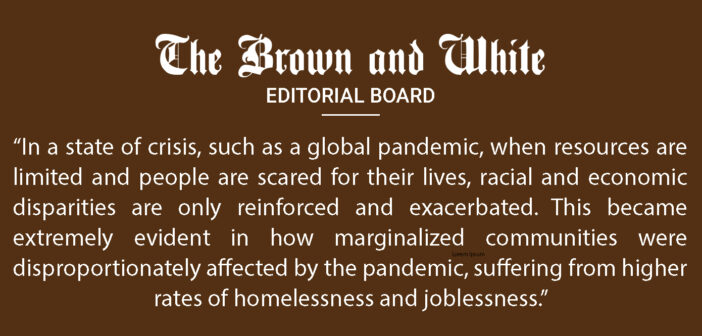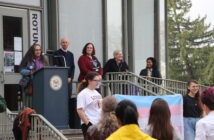With vaccine rollout well underway, the number of COVID-19 cases are thankfully on the decline. With this positive news, some may think that we are soon to see an end to this terribly difficult and detrimental year.
However, that is far from the case. While we may see a slow return to normalcy, the pandemic is not over when it is no longer an imminent public health issue. The pandemic has ransacked our economy, causing many Americans to lose their jobs and even their homes—impacts that a vaccine will not be able to reverse.
Back in March 2020, when COVID-19 started to infiltrate into the U.S. and the Trump administration declared it a national emergency, Congress passed the Coronavirus Aid Relief and Economic Security Act, also known as the CARES act, a stimulus bill in response to the economic crisis caused by the pandemic.
Within this $2.2 trillion stimulus package, Congress prohibited evictions through July 2020. A month later, the Centers for Disease Control and Prevention (CDC) passed its own eviction moratorium to last through March 2021.
Moratoriums prohibit evictions, or removals, for nonpayment of rent. They do not, however, prevent evictions for other reasons, such as failing to comply with a property’s rule. Renters must also opt into the moratorium in order to reap its benefits.
As we approach the end of March, many Americans are still financially struggling and unable to collect the funds to pay rent. According to the U.S. Census Bureau, more than 8 million Americans are behind on rent. As a result, the CDC has again extended the moratorium until June 2021.
The question then becomes, what happens when the end of June inevitably comes? Will there be another extension to the moratorium or will the millions of Americans that will likely still be facing financial hardship within the next three months, be left homeless with nowhere to go?
In a state of crisis, such as a global pandemic, when resources are limited and people are scared for their lives, racial and economic disparities are only reinforced and exacerbated. This became extremely evident in how marginalized communities were disproportionately affected by the pandemic, suffering from higher rates of homelessness and joblessness.
According to a study tracking the impact of the pandemic on marginalized populations in the U.S., the employment sectors most affected by social distancing protocols are restaurants and bars, travel and transportation, entertainment, personal services and certain types of retail and manufacturing— sectors that employ higher percentages of people of color. In turn, disproportionate numbers of employees of color are being displaced from their jobs.
The same study noted that the workers most likely to be affected by unemployment due to COVID-19 have had less schooling and are at a lower socioeconomic status. Therefore, the most vulnerable in the United States are more likely to lose their jobs and will not have the income to support themselves through unemployment.
Just between March and April 2020, the unemployment rate in the Bethlehem, Allentown and Easton areas skyrocketed from 5.6 percent to 16.7 percent, according to Lehigh Valley Live.
Communities of color also experience housing insecurity at higher rates due to historic and present racist policies.
According to the National Law Center on Homelessness and Poverty, households of color experience cost-burden at higher rates, having to spend over 30 percent of their income on housing.
The higher rental and cost-burden rates among communities of color, with the increased rates of lost wages, put them at much greater risk for eviction than that of white communities.
The extending of the moratorium, while helpful for those who need the helping hand, is just a band-aid to a much larger issue. The government has not properly responded to the financial effects of the pandemic and we are approaching a pressing need to solve the long-term socioeconomic effects of the pandemic.
Congress has produced stimulus packages over this year that alleviate some of the turmoil caused by the economic crisis, but has yet to create an infrastructure that addresses the economic issues that will outlive the end of the pandemic.
The money provided by these stimulus packages are just delaying the reality of the financial effects caused by COVID-19. The funding will inevitably run out, so there needs to be local and federal programs in place that will help solve these economic problems over time, so those affected won’t be led down a path to inevitable drop-off.






Comment policy
Comments posted to The Brown and White website are reviewed by a moderator before being approved. Incendiary speech or harassing language, including comments targeted at individuals, may be deemed unacceptable and not published. Spam and other soliciting will also be declined.
The Brown and White also reserves the right to not publish entirely anonymous comments.
1 Comment
This report is grossly flawed as those lower income people on layoff have made more money on layoff than when they worked. The supplemental unemployment benefit has created workers that do not want to return to work because they are paid more to sit on their butts at home!!
Get your facts straight on the impact of job losses for low to middle income Americans.